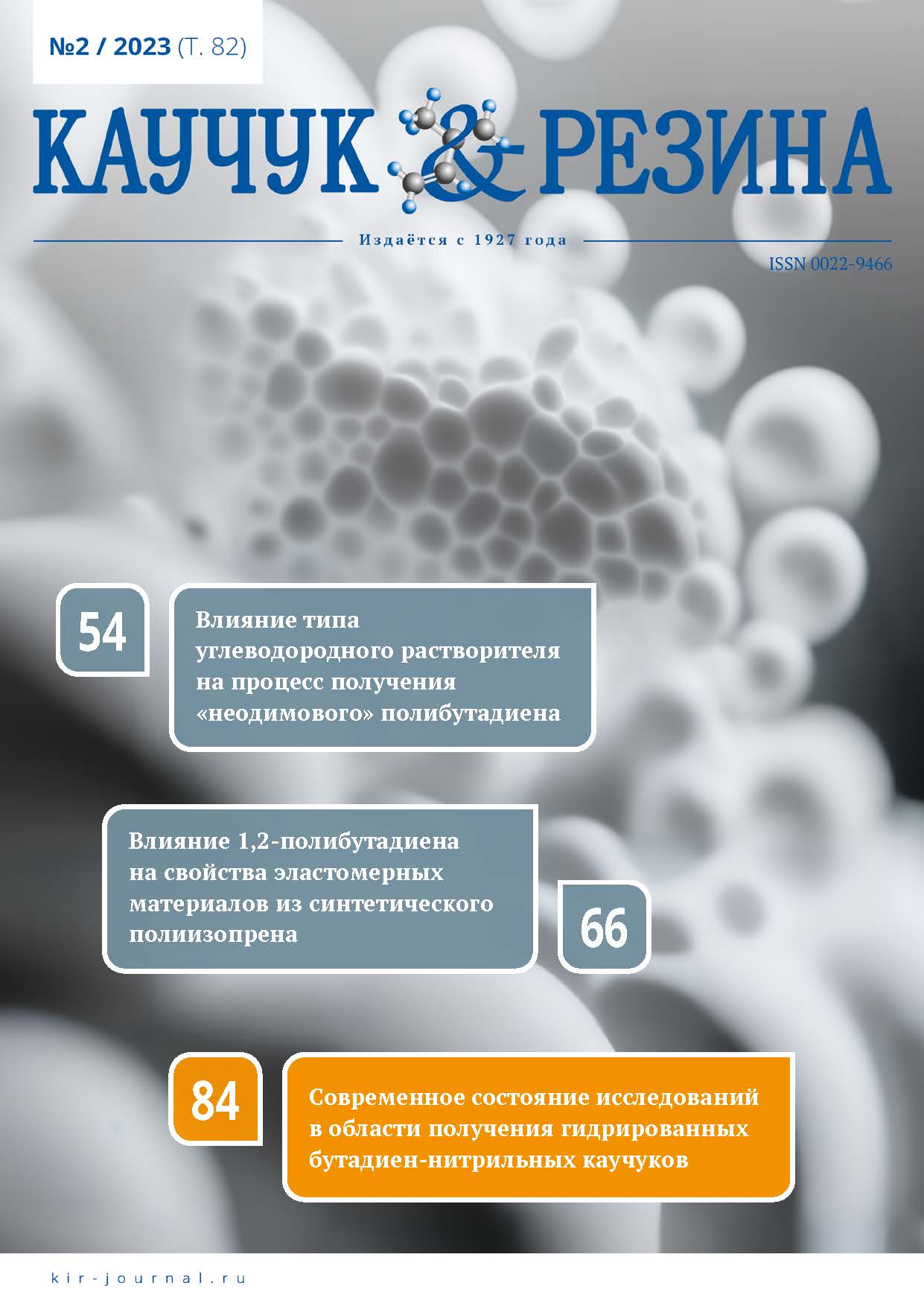Influence of the Type of Hydrocarbon Solvent on the Synthesis Process of «Neodymium» Polybutadiene (Nd-BR)
Published 2023-04-25
How to Cite
Abstract
To increase the efficiency of the production of «neodymium» polybutadiene rubbers by the method of solution polymerization, the use of C5-C6 hydrocarbons of various structures as solvent components that reduce the viscosity of polymer solutions has been studied in this work.
For this purpose, hydrocarbons having a boiling point and a dynamic viscosity lower than cyclohexane were tested: isopentane, cyclopentane, isohexane (2-methylpentane), n-hexane and technical hexane.
As a result of the work the optimal solvent composition was selected, which makes it possible to increase the monomer content in the reaction mass by 40 % due to a significant decrease in the dynamic viscosity of the polymer cement. The activation energies of the viscous flow were determined for solvents of the following compositions: normal hexane/cyclohexane = 60/40 and technical hexane/cyclohexane = 60/40, which amounted to 9,7 and 10,1 kJ/mol respectively.
It was also confirmed that the use of these low-boiling aliphatic hydrocarbons practically does not affect the properties of the resulting rubber and does not decrease the consumer properties of rubber mixtures and vulcanizates based on them.

